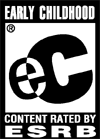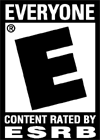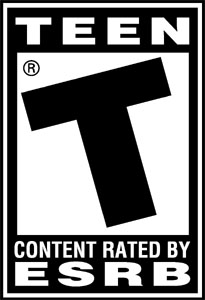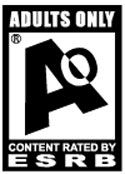So, who's to blame for Columbine, the murder of Daniel Horowitz's wife, and 9/11? PARENTS
Eric and Dylan had parents that didn't understand them, the kid that killed Daniel Horowitz's wife with a stick had parents that encouraged destruction, and Osama's mama cheated on his papa. Now, I'm sure you know exactly what I'm getting at: Parents = Satan
No, no, I'm kidding. It's just that parents have the power to mold their children. Their actions affect how a child may grow up. Video games only have this power if the video games themselves are the parents, but, of course, that's still the biological parents fault anyway.
Ok, I guess I can't give parents all the credit, video games can and sometimes do introduce subjective themes to children that may affect them afterwards, but that's why we have the ESRB.
E - Entertainment
S - Software
R - Rating
B - Board
This is the organization that puts those letters on video game cases (in case you didn't know). Each of these "letters" or ratings are made to give parents a general idea on what games are suitable for their kids. Here is a basic rundown of the ratings:

Early Childhood - This rating is not meant for you; if you can read what I'm typing right now, don't even worry about it.

Everyone - Recommended for players 8-163. It's for exactly who it says it's for.

Everyone 10+ - Here is a fairly new rating added just last year. It's used pretty much the same as the previous rating. Games with this rating usually contain a bit more violence than games with the traditional E rating.

Teen - I'll give you three guesses.

Mature - Now we're on to the good stuff. This is the rating that has people such as Jack Thompson worked up. These ratings are recommended for people 17 and up for highly subjective themes that most parents would rather not have their children ever see. At the moment, anyone under the age of 17 must have a parent/guardian with them during the time of purchase.

Adults Only - I'm entirely sure that you will never see a game that has this rating in the United States. If you are under the age of 18, you will not be able to buy or play any game with this rating. The reason you won't be able to see a game with AO on the box is that stores refuse to sell them. Not only that, but a game company's audience is severely limited. With that in mind, companies don't even bother making any. These titles usually comprise of overly large amounts of sex and nudity. Even with it's rarity, GTA recently suffered the AO problem with a player created mod called hot coffee.
What we should do is take elements from Europe's rating system: PEGI
This system uses a series of large numbers and images to explain what the rating for a game is and why it has that rating. If the ESRB "takes" elements from this rating system, I believe many voilent video game problems will be solved.


